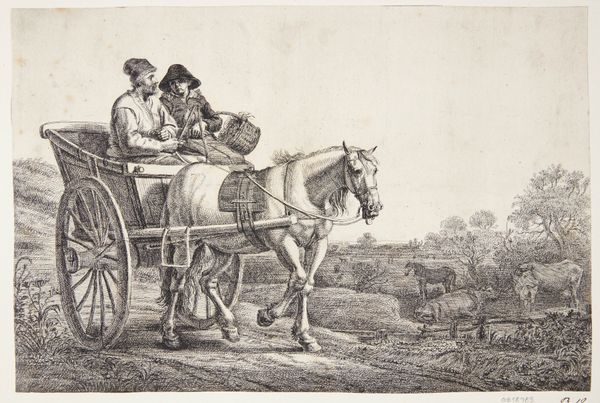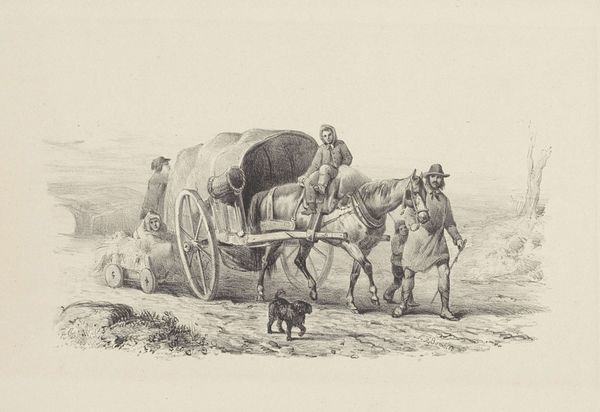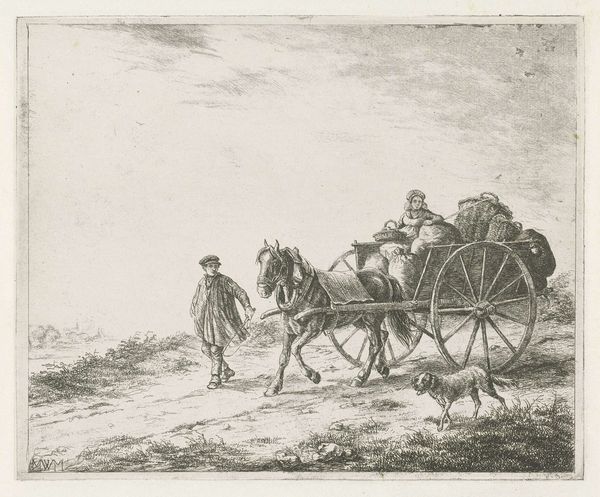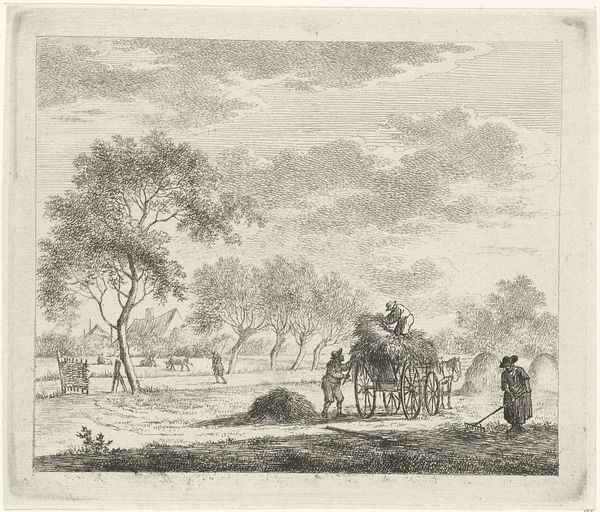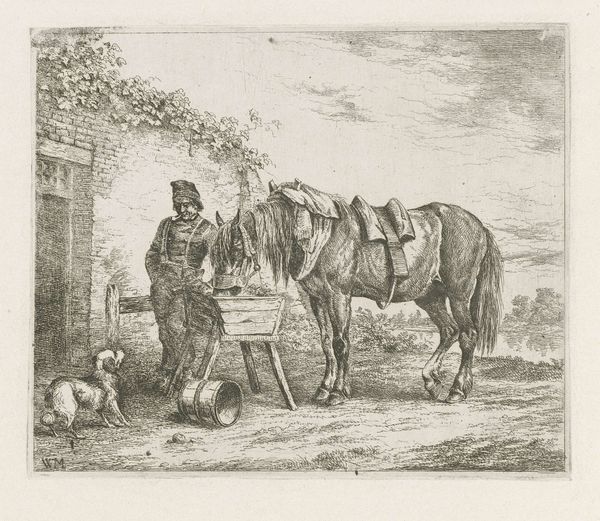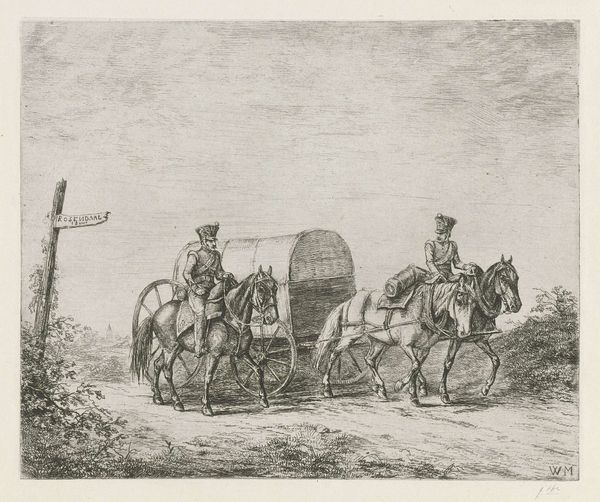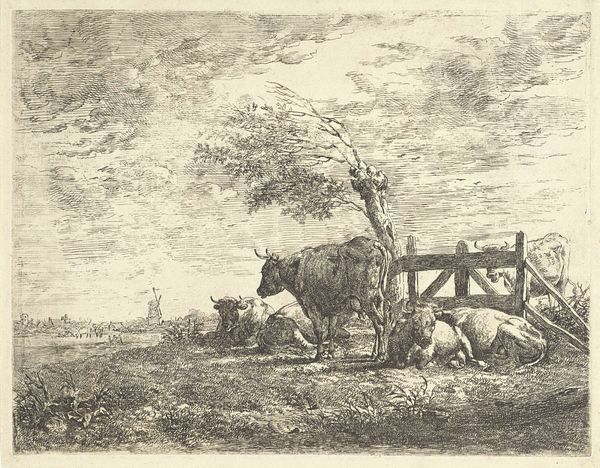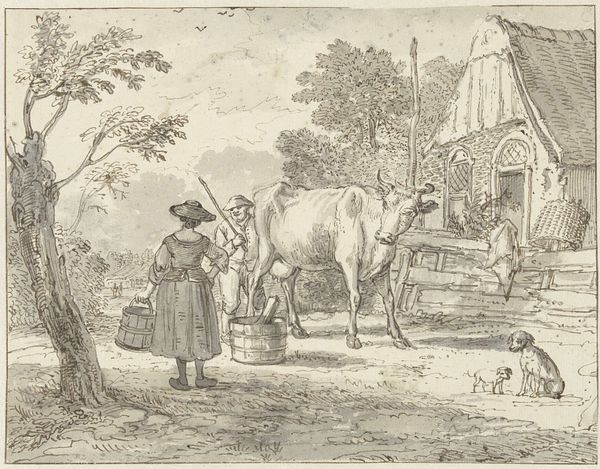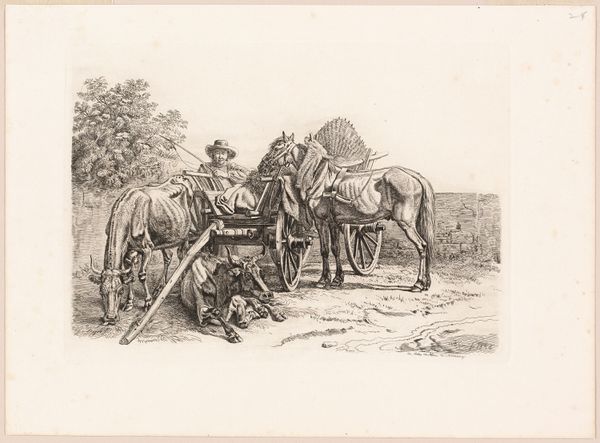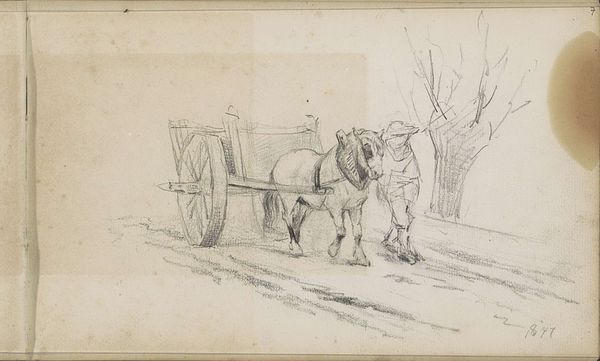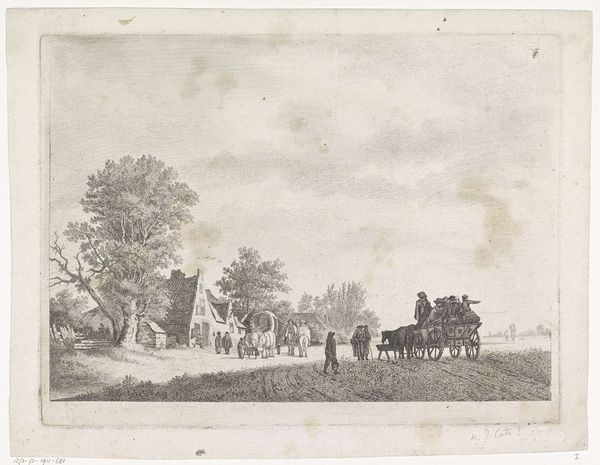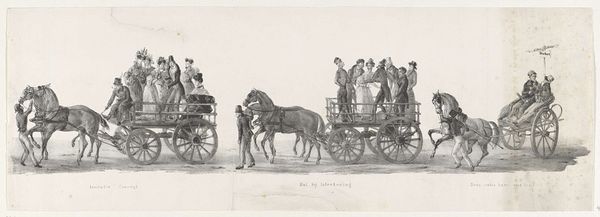
drawing, pencil
#
drawing
#
pencil sketch
#
landscape
#
figuration
#
pencil drawing
#
romanticism
#
pencil
#
genre-painting
#
realism
Dimensions: height 103 mm, width 161 mm
Copyright: Rijks Museum: Open Domain
Editor: So, here we have "Paard en wagen op een weg," or "Horse and Wagon on a Road," a pencil drawing from 1836 by Pierre Louis Dubourcq, housed here at the Rijksmuseum. It has this sort of peaceful, rural feel, and the textures created by the pencil are fascinating. What stands out to you about it? Curator: What immediately grabs me is the sheer labor involved. Consider the material constraints: the sourcing of graphite for the pencils, the preparation of the paper, the very act of rendering this scene. Dubourcq isn’t just depicting a rural scene; he's showing the means of production of rural life itself. Note how he details the harnessing of the horse, the construction of the cart. Editor: That’s interesting. I was more focused on the people in the background and how idyllic it seemed. Curator: But look at the contrast. We have the implied labor of the people – presumably field workers – in the distance, versus the active labor of the figures with the cart. The artist has carefully chosen to detail this specific type of transport that is dependent on animal and man for survival and trade. Where did the materials for this piece come from, who made them and where would be my next line of questioning. Editor: So, you are saying this is not about how pretty a landscape it depicts? Curator: Precisely. It's about interrogating the labor and resources that make that "pretty" landscape possible. Also, I find myself wondering where this would have been exhibited. Was it intended for public consumption, and what message would have been received given its form as pencil on paper rather than paint on canvas? Editor: I never thought about that difference in artistic value playing a role. Curator: Exactly! These elements contribute to the art historical record, adding nuance to our understanding of social class in both subject matter and technique. Editor: Wow, I am beginning to understand. It's much more involved than just the surface image, isn't it? Thank you so much! Curator: You're very welcome. Remembering to analyse material history can give access to narratives from so many avenues for thought and debate!
Comments
No comments
Be the first to comment and join the conversation on the ultimate creative platform.
